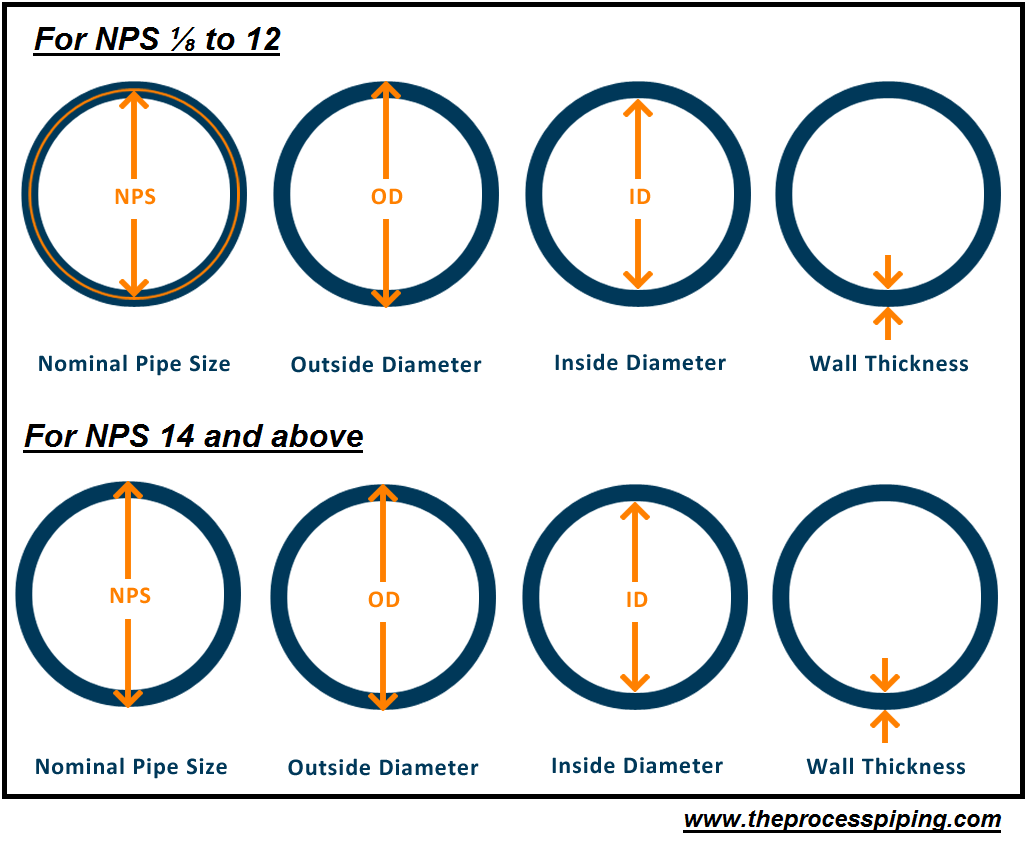What is “Nominal Pipe Size”?
You’ve probably encountered the abbreviation NPS previously on our or similar websites. It means “Nominal Pipe Size,” and it is the North American standard for measuring pipe sizes used for various pressures and temperatures. The NPS standard is widely accepted in the USA, but some things have to be observed correctly in order to find the right nominal pipe size.
The reason is very straightforward – NPS tells you the diameter of the outer wall of the pipe, but only for sizes larger than NPS 14. For smaller pipes of NPS 1/8 and up to NPS 12, the number is not directly connected to the outer diameter of the pipe. More precisely, an NPS 12 pipe will have an outer diameter of 12.75 inches, while an NPS 14 pipe will have an outer diameter of 14 inches.

It may sound confusing, but luckily most tables that have the NPS number also contain the pipe schedule and the metric DN standard, where the diameter of the outer wall is measured in millimeters. The reason why there is a disparity between smaller and larger pipe sizes is that they are two slightly different standards. When the NPS standard was first introduced, three wall thicknesses were used: Standard (STD), Extra Strong (XS), and Double Extra Strong (XXS), so the NPS values always gave the same inner diameter of the pipe. However, today multiple pipe thicknesses are used, and the NPS value became indirectly related to the inner and outer diameter of the pipe.
Things like the inner diameter or the thickness of the wall won’t be mentioned anywhere in the NPS standard. Those details can be found in pipe schedule parameters. Please note that the American Standard for funnel assignments also uses the term NPS, but there it signifies “National Pipe Thread Straight.”

 Tech Steel & Materials
Tech Steel & Materials